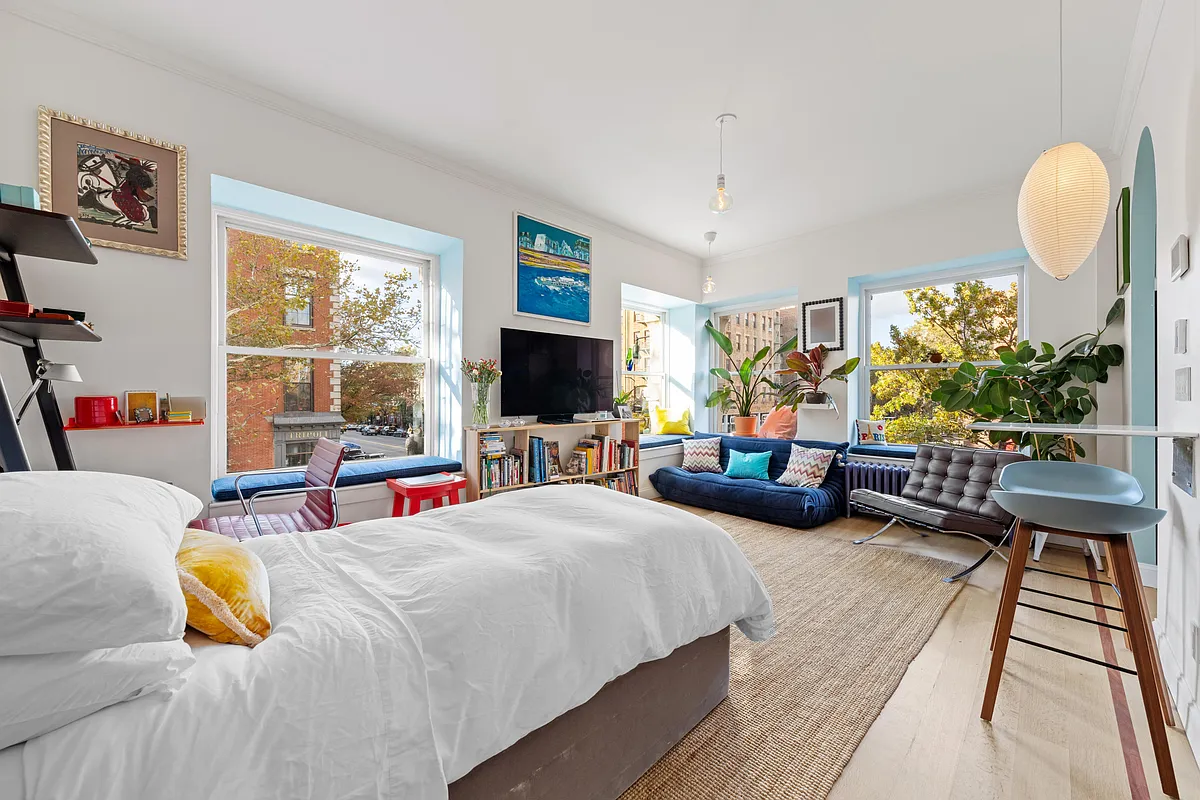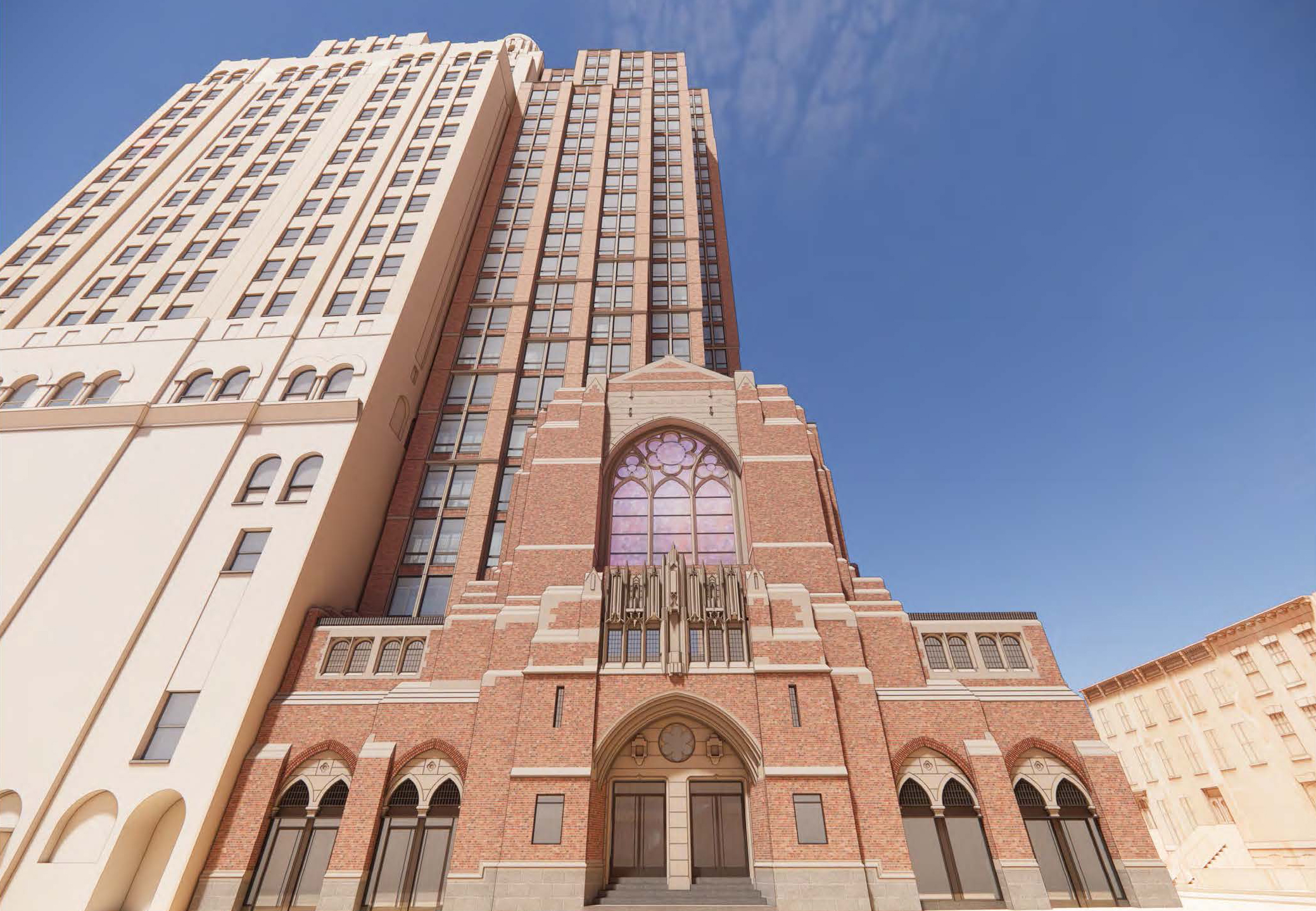House of the Day: 631 3rd Street
While we’re not so sure it’s actually “the finest townhouse in Park Slope,” as the listing boasts, there’s no arguing with the fact that 631 3rd Street is one sweet pad. The 4.150-square-foot limestone mansion has recently been renovated in a tasteful and environmentally-friendly manner. The seller’s looking to get $4,195,000-it’ll be interesting to see…


While we’re not so sure it’s actually “the finest townhouse in Park Slope,” as the listing boasts, there’s no arguing with the fact that 631 3rd Street is one sweet pad. The 4.150-square-foot limestone mansion has recently been renovated in a tasteful and environmentally-friendly manner. The seller’s looking to get $4,195,000-it’ll be interesting to see whether the 4-handle proves to be a psychological barrier to buyers. By comparison, 536 1st Street, the closest comp, closed for $3,600,000 in February; though slightly, that house definitely is less of a show-stopper. (Townsley & Gay recently sold another 1st Street mansion that had been listed for a while at $3,295,000.) So waddya think? Can they clear $4 mil on this?
631 3rd Street [Brown Harris Stevens] GMAP P*Shark





8:29 = owner.
Yeah, the yard is not deep enough with the extension (even if just to mainly look out at), and the lack of a garden in the lot behind also is not so nice.
Would have preferred house with dining area in central parlor – and kitchen where dining room is, with only a small deck where the first half of the kitchen is to allow for access to stairs to garden. But, given that the central parlor is clearly a central parlor, I can see why they added a kitchen extension – though they sacrificed the garden to do so.
I saw this house. It is the nicest house reno I’ve ever seen in Brooklyn. Lots of details and great light. Not a small feat. It’s like living in a work of art. I would love to see this architect’s other houses too just to see if they had such beautiful finishes and everything. I wish I could afford it. Somebody will buy it and love it. I’m not the broker btw. I don’t think the question is whether they will get their price. The question is how quickly.
I saw this house. It is the nicest house reno I’ve ever seen in Brooklyn. Lots of details and great light. Not a small feat. It’s like living in a work of art. I would love to see this architect’s other houses too just to see if they had such beautiful finishes and everything. I wish I could afford it. Somebody will buy it and love it. I’m not the broker btw. I don’t think the question is whether they will get their price. The question is how quickly.
Meh.
Sorry,
Ms. Wordy here,
I meant to write that earlier houses had one sink to handle wastewater which went to a dry well which also handled the rainwater off the roof. I made is sound like the rainwater was being dumped into the one kitchen sink on the ground floor…duh.
3:56 PM,
Regarding NYC not having service alleys:
We should all bear in mind the lifestyle of the first owners when this house was built. The may have kept a carriage at a nearby building or simply rented out when they needed one or, took “cabs” (from “cabriolet”, a type of carriage). And even though cars were coming in at this time, “parking the car out front” was not something anyone would have dreamed of. Carriages dropped the owners off at their door and, unless you lived in a house with a stable on the property (like in Clinton Hill) the driver brought the horse and carriage to the stable where the horse was boarded. Again, many people didn’t own their own equipage but paid on a needs basis much like we pay for car services today if we want a certain number of hours.
You mention the lack of service roads.
In terms of garbage collection, garbage removal in US cities was not handled the way it is now. For a house like this, a maid would probably have carted out the garbage pail when the garbage men brought the wagon down the street during the day. Refrigerators, TV, old microwave ovens, etc. wouldn’t bulk up the trash. All the plastic, packaging, newspapers, metal and glass would not have loaded up the trash.
There was a lot of “recyclingâ€â€¦and very end-specific at that. Rags, for example, were collected for papermaking by special collectors, not thrown in the trash…that collected when they were truly rags, and had no more life left in them. Many things were never thrown out. Clothes were nearly always repurposed. Unwanted furnishings would be removed, often by the company supplying new furnishings, and end up in another home…sometimes, in fact, in what were consider middle class and well-to-do homes, the furniture was rented.
Not that there was no problem with garbage and trash in NYC when this house was built…
In some cities in the US, even largish ones, garbage was left in the middle of streets up the center line for foraging pigs to eat. Ah…the good old days when stepping out the door could mean stepping into manure. We can’t imagine the smells.
BTW, in the area of Brooklyn in a swathe from BH to FG built up quite a bit earlier than PS, human waste was also probably carted off on a cart back in the day. Chamber pots were carried right to the cart as it went by and dumped…as in “take a dump” out the door. Our house wasn’t built with indoor plumbing but may have had one sink for dumping all household wastewater and handling the rainwater off the roof. Many of our houses have dry wells in the yard with a brick conduit from the house to the well.
There *are* the type of service roads running behind houses down the center of blocks in parts of NYC, just not brownstone Brooklyn. Most of them in NYC probably were built after the advent of the Model T. like in Queens. But, in some cities in the US, in the late 1800’s and early 1900’s, these back service roads were built in toney places as mews for stables and housing staff. There are mews in the NYC but they only occasionally seem to be access roads. They are usually part of the fabric of the grid.
Sorry for the lesson. At least Polemicist usually seems to appreciate the read.
Regarding this house. I have to say, the details of the house’s era were kind of austere and generic (beaux arts), a neoclassicism that can be easy to live with but is fairly bland and reproducible…there is A LOT of it in the US. Compared to it the many earlier styles in brownstone Brooklyn: the neo-rococo of the Italianate, the rarer Greek Revival, the hints at federal which harkens back to Georgian, the neo-grecque. The earliest neoclassical surviving in NYC are the pre-1800 buildings but their charm continued into the early 1800’s. When neoclassicism waned in favor of romanticism, things went in all directions…and some very funny ones at that. Eventually, though, many elements pulled back toward neoclassicism by the time the colonial revival kicked in at the time of the Centennial…but really blossomed as a general style well after 1876. A renewed interest in Georgian and colonial architecture was keyed to political and social issues of the moment and eventually boiled down through beaux art into the “colonial” we got in the 1920’s-1940’s eventually overlaying onto 60’s and 70’s suburban houses and apartment complexes and now mcmansions…oh, can can’t forget the Greek Revival of postmodernist architecture.
This house is okay but Cha does not seem to worry much about “greenâ€â€¦unless he’s trying to get into it the last year or two. But then, when you’re designing for people who don’t know from “green†what is an architect to do?
8:18 – eat sh*t and die.
There are plenty of people out there with $4M in the bank. All you need is one to fall in love with the house and you’ve got a sale. I think it goes for the asking price within three months.